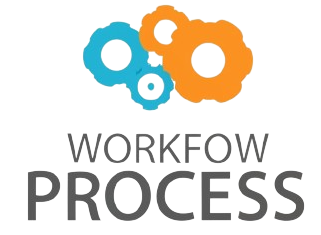How to implement AI governance for agentic AI solutions
As artificial intelligence continues to evolve, agentic AI solutions—systems capable of autonomous decision-making—are becoming increasingly prevalent in industries such as healthcare, finance, and manufacturing. However, the enhanced autonomy of these systems raises significant governance challenges. Proper AI governance ensures that these solutions act responsibly, ethically, and remain aligned with human values while optimizing performance. Implementing robust AI governance frameworks not only mitigates risks but also builds trust among stakeholders and users. This article explores the critical steps organizations must take to establish effective governance for agentic AI, detailing the importance of policy development, risk management, transparency, and ongoing compliance monitoring.
Understanding the unique challenges of agentic AI governance
Agentic AI solutions differ fundamentally from traditional AI models because they operate with a higher degree of independence. These systems are designed not only to analyze data but to take actions and make decisions that can impact real-world outcomes without direct human intervention. This autonomy introduces several governance challenges:
- Accountability: Determining who is responsible for decisions made by the AI.
- Transparency: Understanding how the AI reaches decisions is often complicated by complex algorithms and adaptive learning.
- Ethical concerns: Ensuring that AI actions align with organizational values and societal norms.
- Risk management: Mitigating unintended consequences from autonomous decisions.
Tackling these challenges requires a tailored governance approach that goes beyond conventional AI oversight, incorporating multidisciplinary perspectives including legal, ethical, technical, and operational viewpoints.
Establishing a clear AI governance framework
A foundational step in implementing governance for agentic AI is developing a comprehensive framework that defines the rules, processes, and roles involved. This framework should include:
- Policy articulation: Draft policies that govern AI development, deployment, monitoring, and data management to ensure compliance with regulatory standards and ethical guidelines.
- Roles and responsibilities: Clearly assign ownership of AI governance tasks to specific teams or individuals, including AI ethics committees or responsible AI officers.
- Decision rights: Define the boundaries within which agentic AI systems can operate autonomously versus when human approval is mandatory.
- Integration with corporate risk management: Link AI governance closely to enterprise risk frameworks to address security, privacy, and reputational risks.
This structured approach helps create accountability and provides clarity on managing complex agentic AI systems within organizational goals.
Implementing transparency and explainability mechanisms
Transparency is key to maintaining stakeholder trust, especially when AI acts autonomously. Agentic AI solutions require special attention in making their operations interpretable. Organizations should adopt:
- Explainable AI (XAI) tools that clarify how decisions are reached, which is particularly important for regulated sectors.
- Comprehensive logging and audit trails that record the AI’s actions and decisions for future review.
- Stakeholder communication strategies to educate users, regulators, and partners on AI behavior and expected impacts.
By enhancing explainability, companies not only support governance but also ensure better alignment of AI outputs with ethical standards and user expectations.
Monitoring, evaluation, and continuous improvement
AI governance is not a one-time effort but an ongoing journey. Continuous monitoring and evaluation are critical to detect drift in the AI’s behavior and respond to emerging risks. Key activities include:
- Real-time monitoring of autonomous decisions against defined KPIs and ethical benchmarks.
- Periodic impact assessments to evaluate societal, legal, and operational implications.
- Updating governance policies in response to new regulations, technological advances, and lessons learned.
- Training and awareness programs to keep teams aligned on governance best practices.
Maintaining a feedback loop enables organizations to refine governance structures and adapt to the evolving landscape of agentic AI.
| Governance aspect | Key actions | Benefits |
|---|---|---|
| Policy framework | Define rules, assign roles, set decision boundaries | Clear accountability, regulatory compliance |
| Transparency | Use XAI tools, audit trails, stakeholder communication | Stakeholder trust, improved compliance |
| Risk management | Integrate with enterprise risk, real-time monitoring | Early detection of issues, reduced liabilities |
| Continuous improvement | Periodic assessments, policy updates, training | Adaptability, ongoing alignment with ethics |
Conclusion
Implementing AI governance for agentic AI solutions is essential to harness the power of autonomous decision-making while safeguarding ethical principles and compliance requirements. A successful governance strategy starts with understanding the unique challenges posed by agentic AI and establishing a comprehensive framework that clearly defines policies, roles, and operational boundaries. Transparency measures such as explainability and audit trails are crucial for building trust and accountability. Continuous monitoring and evaluation further ensure that governance evolves alongside technological advances and shifting regulatory landscapes. By approaching AI governance as a dynamic, integrated process, organizations can confidently deploy agentic AI systems that are responsible, reliable, and aligned with their broader mission and societal expectations.
